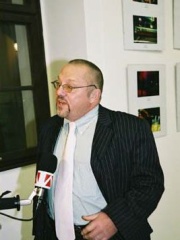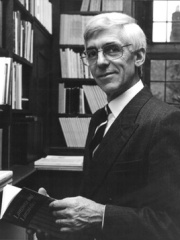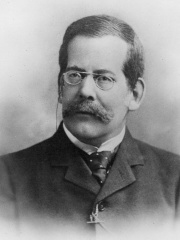
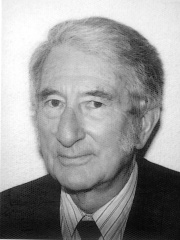
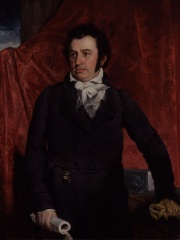

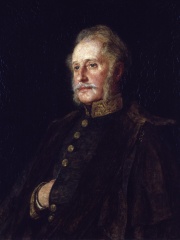
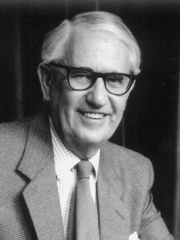
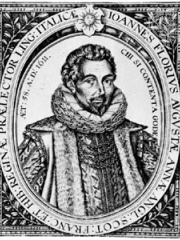
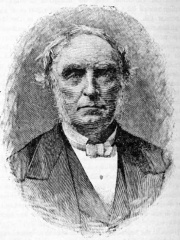
The Most Famous
LINGUISTS from United Kingdom
This page contains a list of the greatest British Linguists. The pantheon dataset contains 214 Linguists, 18 of which were born in United Kingdom. This makes United Kingdom the birth place of the 3rd most number of Linguists behind Germany, and United States.
Top 10
The following people are considered by Pantheon to be the top 10 most legendary British Linguists of all time. This list of famous British Linguists is sorted by HPI (Historical Popularity Index), a metric that aggregates information on a biography's online popularity. Visit the rankings page to view the entire list of British Linguists.

1. William Jones (1746 - 1794)
With an HPI of 69.58, William Jones is the most famous British Linguist. His biography has been translated into 48 different languages on wikipedia.
Sir William Jones (28 September 1746 – 27 April 1794) was a Welsh scholar and judge. Born in Westminster, London to Welsh mathematician William Jones, he moved to the Bengal Presidency where Jones served as a puisne judge on the Supreme Court of Judicature at Fort William and also became a scholar of ancient Indian history. He is known for being one of the earliest scholars to assert the kinship of the Indo-European languages, albeit not the first. Jones also founded the Asiatic Society in Calcutta in 1784.

2. Michael Halliday (1925 - 2018)
With an HPI of 68.62, Michael Halliday is the 2nd most famous British Linguist. His biography has been translated into 29 different languages.
Michael Alexander Kirkwood Halliday (often M. A. K. Halliday; 13 April 1925 – 15 April 2018) was a British linguist who developed the internationally influential systemic functional linguistics (SFL) model of language. His grammatical descriptions go by the name of systemic functional grammar. Halliday described language as a semiotic system, "not in the sense of a system of signs, but a systemic resource for meaning". For Halliday, language was a "meaning potential"; by extension, he defined linguistics as the study of "how people exchange meanings by 'languaging'". Halliday described himself as a generalist, meaning that he tried "to look at language from every possible vantage point", and has described his work as "wander[ing] the highways and byways of language". But he said that "to the extent that I favoured any one angle, it was the social: language as the creature and creator of human society". Halliday's grammar differs markedly from traditional accounts that emphasise the classification of individual words (e.g. noun, verb, pronoun, preposition) in formal, written sentences in a restricted number of "valued" varieties of English. Halliday's model conceives grammar explicitly as how meanings are coded into wordings, in both spoken and written modes in all varieties and registers of a language. Three strands of grammar operate simultaneously. They concern (i) the interpersonal exchange between speaker and listener, and writer and reader; (ii) representation of our outer and inner worlds; and (iii) the wording of these meanings in cohesive spoken and written texts, from within the clause up to whole texts. Notably, the grammar embraces intonation in spoken language. Halliday's seminal Introduction to Functional Grammar (first edition, 1985) spawned a new research discipline and related pedagogical approaches. By far the most progress has been made in English, but the international growth of communities of SFL scholars has led to the adaptation of Halliday's advances to some other languages.

3. Robert Morrison (1782 - 1834)
With an HPI of 61.72, Robert Morrison is the 3rd most famous British Linguist. His biography has been translated into 23 different languages.
Robert Morrison, FRS (5 January 1782 – 1 August 1834) was a British Protestant missionary to Portuguese Macao, Qing-era Guangdong, and Dutch Malacca, who was also a pioneering sinologist, lexicographer, and translator considered the "Father of Anglo-Chinese Literature". Morrison, a Presbyterian preacher, is most notable for his work in China. After twenty-five years of work he translated the whole Bible into the Chinese language and baptized ten Chinese believers, including Cai Gao, Liang Fa, and Wat Ngong. Morrison pioneered the translation of the Bible into Chinese and planned for the distribution of the Scriptures as broadly as possible, unlike the previous Roman Catholic translation work that had never been published. Morrison cooperated with such contemporary missionaries as Walter Henry Medhurst and William Milne (the printers), Samuel Dyer (Hudson Taylor's father-in-law), Karl Gützlaff (the Prussian linguist), and Peter Parker (China's first medical missionary). He served for 27 years in China with one furlough home to England. The only missionary efforts in China were restricted to Guangzhou (Canton) and Macau at this time. They concentrated on literature distribution among members of the merchant class, gained a few converts, and laid the foundations for more educational and medical work that would significantly impact the culture and history of the most populous nation on earth. However, when Morrison was asked shortly after his arrival in China if he expected to have any spiritual impact on the Chinese, he answered, "No sir, but I expect God will!"

4. Henry Watson Fowler (1858 - 1933)
With an HPI of 59.76, Henry Watson Fowler is the 4th most famous British Linguist. His biography has been translated into 19 different languages.
Henry Watson Fowler (10 March 1858 – 26 December 1933) was an English schoolmaster, lexicographer and commentator on the usage of the English language. He is notable for both A Dictionary of Modern English Usage and his work on the Concise Oxford Dictionary, and was described by The Times as "a lexicographical genius". After an Oxford education, Fowler was a schoolmaster until his middle age and then worked in London as a freelance writer and journalist, but was not very successful. In partnership with his brother Francis, beginning in 1906, he began publishing seminal grammar, style and lexicography books. After his brother's death in 1918, he completed the works on which they had collaborated and edited additional works.
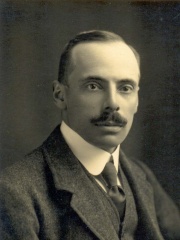
5. Daniel Jones (1881 - 1967)
With an HPI of 59.56, Daniel Jones is the 5th most famous British Linguist. His biography has been translated into 21 different languages.
Daniel Jones (12 September 1881 – 4 December 1967) was a British phonetician who studied under Paul Passy, professor of phonetics at the École des Hautes Études at the Sorbonne (University of Paris). He was head of the Department of Phonetics at University College London.

6. Brian Houghton Hodgson (1800 - 1894)
With an HPI of 59.41, Brian Houghton Hodgson is the 6th most famous British Linguist. His biography has been translated into 29 different languages.
Brian Houghton Hodgson (1 February 1801 – 23 May 1894) was a pioneer naturalist and ethnologist working in India and Nepal where he was a British Resident. He described numerous species of birds and mammals from the Himalayas, and several birds were named after him by others such as Edward Blyth. He was a scholar of Newar Buddhism and wrote extensively on a range of topics relating to linguistics and religion. He was an opponent of the British proposal to introduce English as the official medium of instruction in Indian schools.

7. John Chadwick (1920 - 1998)
With an HPI of 58.99, John Chadwick is the 7th most famous British Linguist. His biography has been translated into 22 different languages.
John Chadwick, (21 May 1920 – 24 November 1998) was an English linguist and classical scholar who was most notable for the decipherment, with Michael Ventris, of Linear B.

8. John Florio (1553 - 1625)
With an HPI of 58.64, John Florio is the 8th most famous British Linguist. His biography has been translated into 17 different languages.
Giovanni Florio (1552 or 1553 – 1625), known as John Florio, was an English linguist, poet, writer, translator, lexicographer, and royal language tutor at the Court of James I. He is recognised as the most important Renaissance humanist in England. Florio contributed 1,149 words to the English language, placing third after Chaucer (with 2,012 words) and Shakespeare (with 1,969 words), in the linguistic analysis conducted by Stanford professor John Willinsky. Florio was the first translator of Montaigne into English, possibly the first translator of Boccaccio into English and he wrote the first comprehensive Italian–English dictionary (surpassing the only previous modest Italian–English dictionary by William Thomas published in 1550). Playwright and poet Ben Jonson was a personal friend, and Jonson hailed Florio as "loving father" and "ayde of his muses". Philosopher Giordano Bruno was also a personal friend; Florio met the Italian philosopher in London, while both of them were residing at the French embassy. Bruno wrote and published in London his six most celebrated moral dialogues, including La cena de le ceneri (The Ash Wednesday Supper, 1584), in which Florio is mentioned as Bruno's companion. John Florio worked as tutor to Henry Wriothesley, 3rd Earl of Southampton; from 1604 he became Groom of the Privy Chamber to Queen Anne, until her death in 1619. Later in his life, Florio was patronised by William Herbert, 3rd Earl of Pembroke, to whom the former bequeathed some of his personal library. Many of the intertextual borrowings by Shakespeare from Florio's works have been long attested, and assumptions have been made to claim secret connections between Florio and Shakespeare, even asserting a putative identity of Florio with the author of Shakespeare's works.

9. James Legge (1815 - 1897)
With an HPI of 57.76, James Legge is the 9th most famous British Linguist. His biography has been translated into 19 different languages.
James Legge (; 20 December 1815 – 29 November 1897) was a Scottish linguist, missionary, sinologist, and translator who was best known as an early translator of Classical Chinese texts into English. Legge served as a representative of the London Missionary Society in Malacca and Hong Kong (1840–1873) and was the first Professor of Chinese at Oxford University (1876–1897). In association with Max Müller he prepared the monumental Sacred Books of the East series, published in 50 volumes between 1879 and 1891.
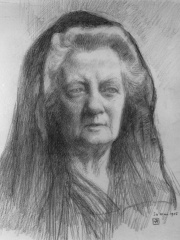
10. Jane Ellen Harrison (1850 - 1928)
With an HPI of 55.48, Jane Ellen Harrison is the 10th most famous British Linguist. Her biography has been translated into 25 different languages.
Jane Ellen Harrison (9 September 1850 – 15 April 1928) was a British classical scholar and linguist. With Karl Kerenyi and Walter Burkert, Harrison is one of the founders of modern studies in Ancient Greek religion and mythology. She applied 19th-century archaeological discoveries to the interpretation of ancient Greek religion in ways that have become standard. She has also been credited with being the first woman to obtain a post in England as a 'career academic'. Harrison argued for women's suffrage but thought she would never want to vote herself. Ellen Wordsworth Crofts, later second wife of Sir Francis Darwin, was Jane Harrison's best friend from her student days at Newnham, and during the period from 1898 to Ellen's death in 1903. The depth and influence of Harrison’s friendship with Eugénie Sellers Strong—ended by a dramatic breech in the 1890s—is explored in a monograph by Mary Beard: after their breakup Sellers became an influential authority on the material culture of Imperial Rome, while Harrison’s work dug deeper and deeper into the primitive ritual origins of Greek drama. Though moving in different directions chronologically, in terms of their focus, the women appear otherwise as doppelgängers of one another in their concerns, style and characteristic forms of argument deriving from an approach that became known as classical anthropology. Harrison’s Prolegomena to Greek Religion had a compelling and inspirational impact on the later artworks of T. S. Eliot, Virginia Woolf, and Hilda Doolittle and her scholarly legerdemain was formative to the group of classicists known as the Cambridge ritualists.
People
Pantheon has 18 people classified as British linguists born between 1553 and 1942. Of these 18, 1 (5.56%) of them are still alive today. The most famous living British linguists include Ian Hancock. The most famous deceased British linguists include William Jones, Michael Halliday, and Robert Morrison.
Living British Linguists
Go to all RankingsDeceased British Linguists
Go to all RankingsWilliam Jones
1746 - 1794
HPI: 69.58
Michael Halliday
1925 - 2018
HPI: 68.62
Robert Morrison
1782 - 1834
HPI: 61.72
Henry Watson Fowler
1858 - 1933
HPI: 59.76
Daniel Jones
1881 - 1967
HPI: 59.56
Brian Houghton Hodgson
1800 - 1894
HPI: 59.41
John Chadwick
1920 - 1998
HPI: 58.99
John Florio
1553 - 1625
HPI: 58.64
James Legge
1815 - 1897
HPI: 57.76
Jane Ellen Harrison
1850 - 1928
HPI: 55.48
John Lyons
1932 - 2020
HPI: 55.20
Henry Sweet
1845 - 1912
HPI: 54.71
Overlapping Lives
Which Linguists were alive at the same time? This visualization shows the lifespans of the 15 most globally memorable Linguists since 1700.

